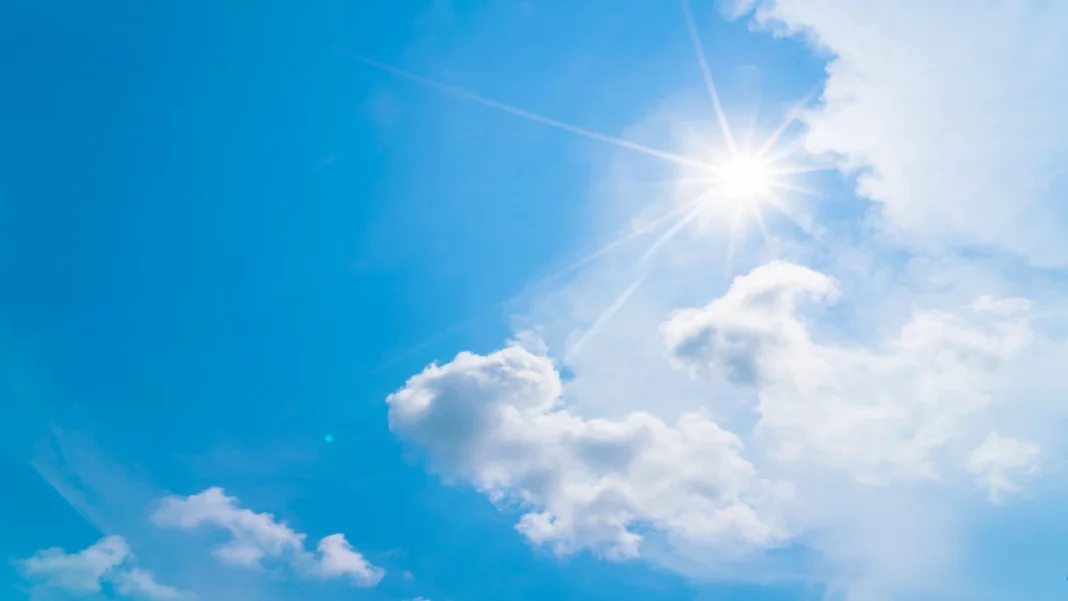Weather (আবহাওয়া) is a combination of events that occur in our atmosphere daily. It varies by location and changes throughout time. The majority of weather occurs in the troposphere, the lowest layer of the Earth’s atmosphere.
Despite their vast differences, rain and gloomy clouds, windy clear skies, cold snow, and sticky heat are all-weather.
Weather (আবহাওয়া): What Is It?
Weather in a specific location refers to the state of our atmosphere at that moment. The weather is constantly changing because it is influenced by so many distinct factors, such as temperature, air pressure, cloud formation, wind, humidity, and rain.
All you have to do is glance outside to determine the weather. The weather impacts what you wear and whether you hang your laundry outside today. However, it may also negatively affect our way of life and the environment.
Why does the Weather Matter?
The weather (আবহাওয়া) can significantly affect our lives, causing everything from dangerously high temperatures to flash floods that destroy property.
Weather variations can also have an impact on our mental health; studies have shown that higher temperatures are linked to increased levels of stress and depression, as well as other health issues.
While severe weather, often called high-impact weather, such as hurricanes, blizzards, and tornadoes, can destroy entire cities. We must be able to forecast these weather patterns and lessen their effects.
Understanding our weather is more crucial than ever since extreme weather is becoming more common and intense due to climate change.
Understanding Environmental Extremes
-
Cold event
Cold events are rapid temperature changes that result in prolonged and severe cold weather. These disasters frequently affect transport, agriculture, and emergency services. Cold snaps, like heat waves, have been linked to higher fatality rates.
-
Heatwave
Heatwaves are extended periods of hot weather exceeding an area’s average temperature. It can also be associated with high humidity levels.
Heatwaves frequently occur in the summer when high-pressure weather systems form over a specific area. These systems move slowly and can remain in one location for several days or weeks.
-
Drought
Droughts occur when an area receives less than average rainfall over some time. Lack of rain can cause crop failures and environmental harm by reducing soil moisture levels, increasing the risk of forest fires, and generating water shortages. Droughts can also decrease the availability of clean drinking water and cause food shortages in areas that rely on local agriculture.
Weather and Air Pressure Relations
Changes in air pressure govern the meteorological events that occur in a given area. The weight of the enormous amounts of air molecules that make up the atmosphere creates air pressure. They usually have clear, blue skies during periods of high air pressure. Because of the high pressure, air flows downward and spreads out when it approaches the ground, limiting the formation of clouds. Low air pressure causes air to flow together, converge higher, and rise, cooling and creating clouds. Remember to pack an umbrella on low-pressure days if it rains or produces other precipitation.
Forecasting the Weather (আবহাওয়া)
Meteorologists create local or regional weather forecasts, including estimates for several days ahead. The most accurate forecasts consider weather occurrences occurring throughout a large geographic area. Forecasters can more accurately estimate where storms will be tomorrow and the next day by knowing where they are. The network of weather observations and technological tools like Doppler radar and weather satellites facilitate scanning a wide area.
Although predicting the weather up to two weeks in advance is likely only feasible due to the environment’s chaotic nature, thanks to the combination of new technologies and more established techniques, forecasters can now produce more accurate and thorough forecasts.
Differences between Climate and Weather
Climate is the average weather pattern over several decades in a particular place. Regional climates vary. For instance, an island in the tropics has a very different climate from Antarctica. The average of all regional climates is referred to as the global climate.
We anticipate that weather patterns will shift in tandem with changes in the global climate. Although it is hard to determine whether climate change impacted the weather on a given day, patterns can be predicted to alter. For instance, experts anticipate more extreme weather events as the climate warms. They also forecast fewer frigid winter days and more hot summer days. That does not imply that winter weather will end. In certain places, the likelihood of heavy snowstorms may increase since colder air can hold more water, which can create snowflakes.
Conclusion
Weather (আবহাওয়া) and climate are distinct but connected concepts. One involves the atmospheric conditions and the current zone. The other examines a broader area’s atmospheric conditions over an extended period. Weather and climate are critical components of our environment, and even minor fluctuations can hurt the way of life in that region. There is a need for additional inventions to mitigate or avoid the detrimental effects of extreme weather and climate change.
Also Read: WWE Royal Rumble 2024: Experience Drama and Athleticism


